Muppet is feeling mean today and wishes to inflict upon you the following case: a 56-year-old woman with a history of respiratory infections. She was operated on for osteogenic sarcoma of the right leg eight years earlier.
PA and lateral chest show typical signs of collapse of LUL, with haziness of hemithorax, luftsichel (Fig 1, arrow) and marked displacement of the major fissure on the lateral view (Fig 1, arrows).
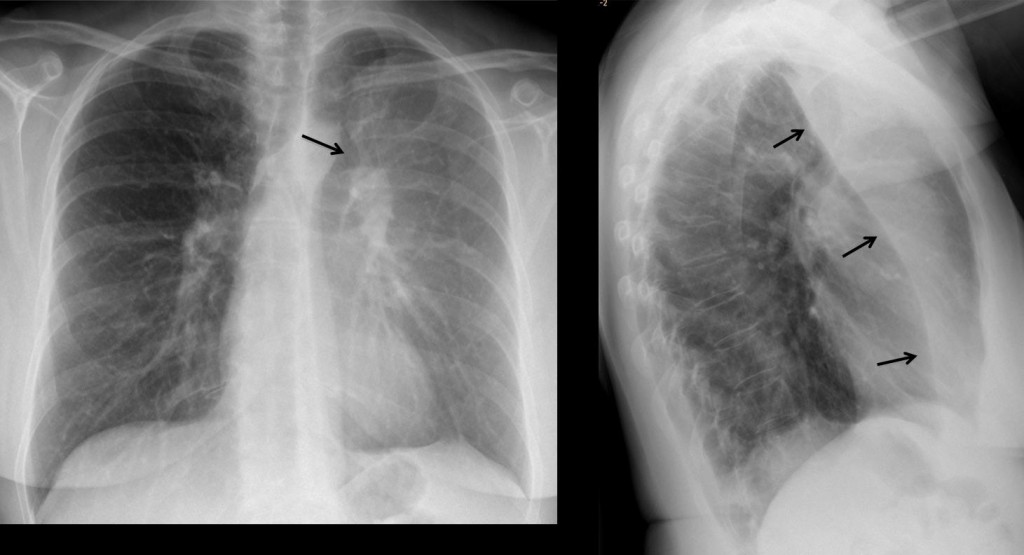
Fig. 1
CT demonstrates an endobronchial lesion at the origin of the LUL (Fig 2A, arrow) and heavy calcification along the path of the bronchus (Fig 2B, arrows). Bronchoscopy confirms the endobronchial mass (Fig 2C, arrow).
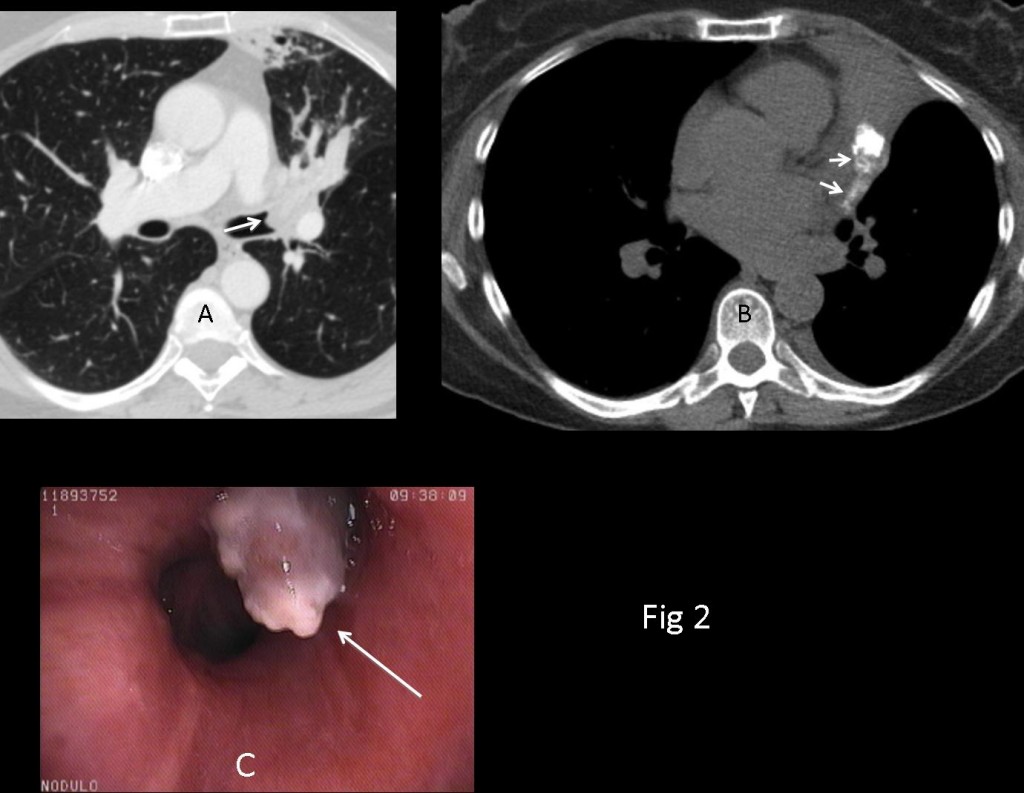
Fig. 2
The most common endobronchial mass is lung carcinoma, but the calcification goes against it. Broncholiths and foreign bodies are not usually located in upper lobes and calcium is better defined. Carcinoid tumour and hamartomas are a possibility. Given the previous history of osteogenic sarcoma, endobronchial metastases should be considered.
Final diagnosis: endobronchial metastases from osteogenic sarcoma.
Teaching point: The most common cause of LUL collapse is first and foremost a carcinoma of the lung. Endobronchial metastases can give a similar appearance and are more common in tumours of the breast, kidney and melanoma although they may occur in any type of tumour, as in the present case.
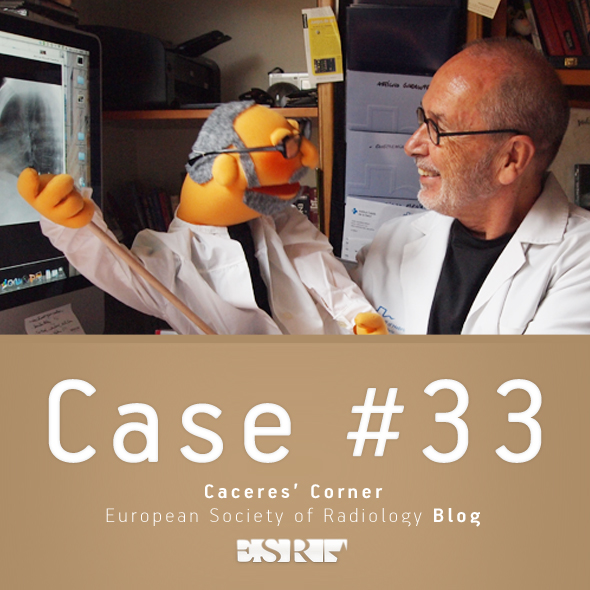
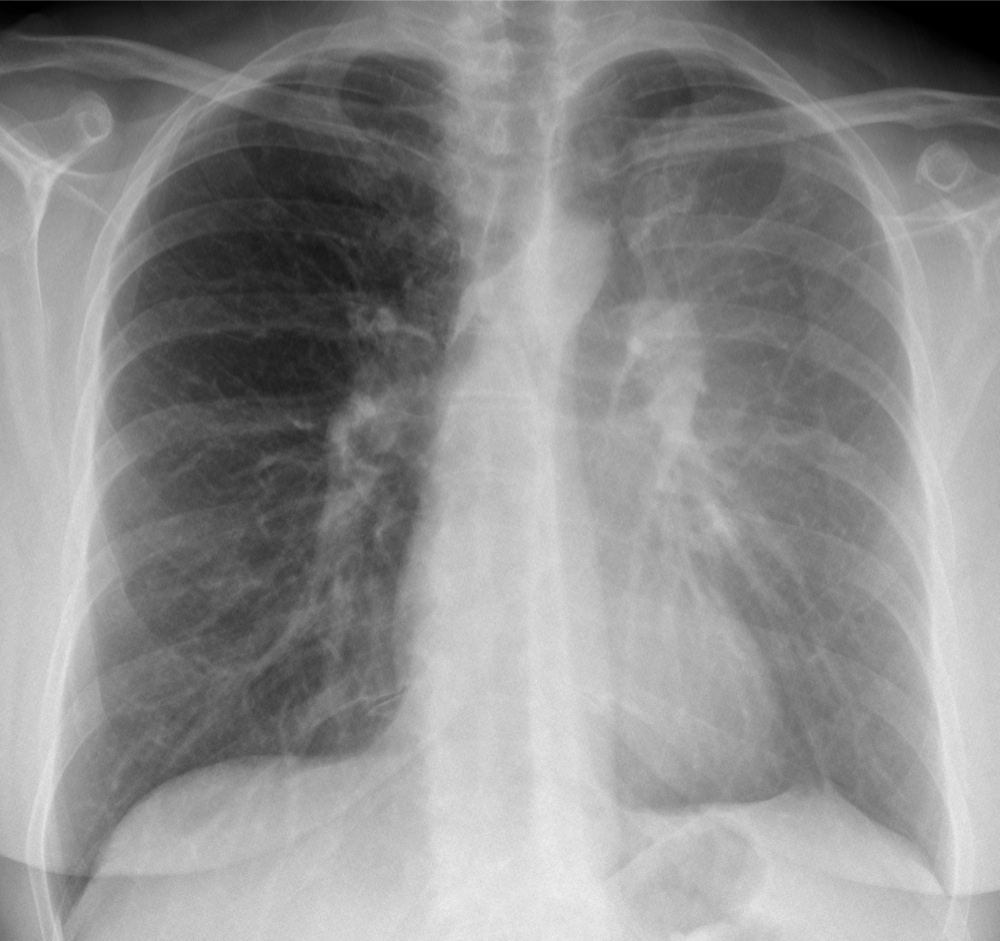
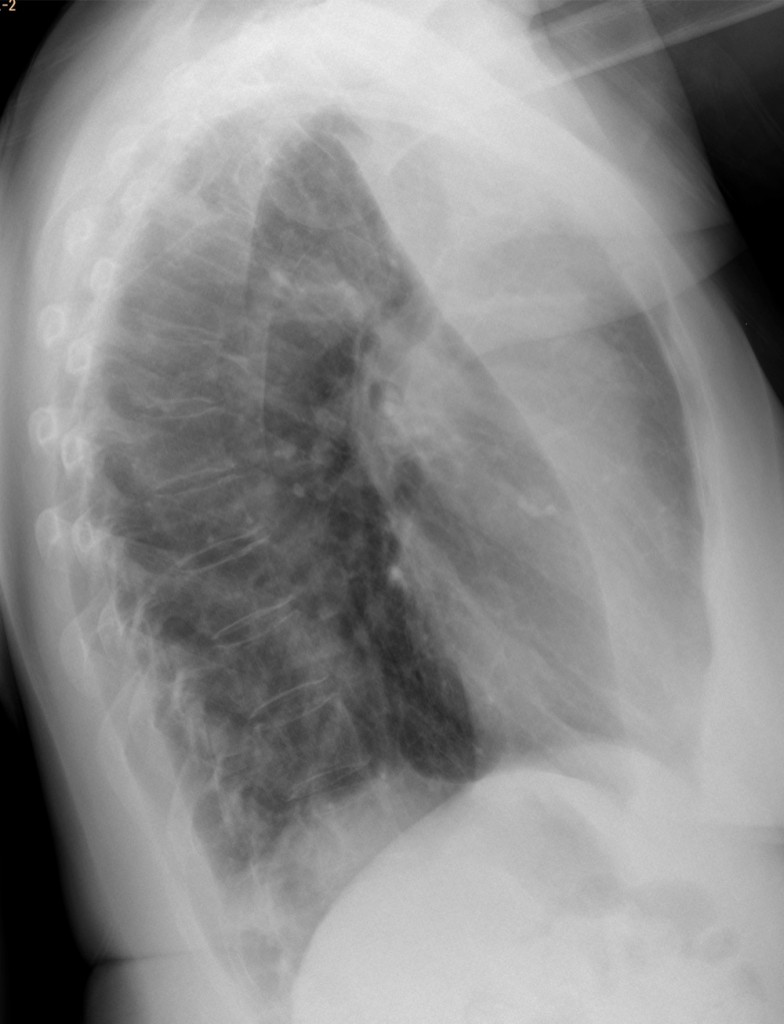





luftsichel sign.
2 – carcinoma of the lung
1 – mets of sarcoma
3 – mets of sarcoma
Three answers is not fair. Have to choose one
mets from sarcoma ..
The Luftsichel sign + retrosternal opacity projection on profile + diaphragmatic peak indicate LUL atelectasy; Probable cause is some central calcification – maybe broncholiths or calcified ADP (goes well with recurrent infections – maybe tb?). I see no reason to think of mets from osteosarcoma 8 years apart.
And there’s a small left pleural effusion – dunno why…
4. Seguiré estudiando el caso
Keep thinking. Answer will be posted next Wednesday
the opacity in lateral projection show thathe cause is one obstruction produced by bonchiolits like i can seein inthe ct of the lung not exist neoplasis causes in this images
PA – left upper lobe collapse – veiling density, luftsichel sign, juxtaphrenic peak sign; also a left apical pneumothorax; Lateral – confirms the LUL collapse; CT chest (unenhanced) – calcified lesion causing obstruction of the left upper lobe bronchus likely from an osteosarcoma metastases – these are associated with pneumothoraces
4.bronchial carcinoid tumor maybe?
another thought…foreign body aspiration?
Lingular atelectasia- intrabronchial mtx ?
Atelettasia lobo polmonare da bronco-litiasi del bronco lobare. quale esito di calcificazioni da tappo mucoso.GG
I would prefer TB if the patient is coming from east Other wise it’s metastatic lesion
Patient from Barcelona, housewife.
None of the above.Pneumothorax partialis?
is a bronchiolit whit atelectasis
Post-obstructive atelectasis of the left upper lobe.
Unilateral LT pleural effusion.New pulmonary primary.
It could be osteogenic sarcoma M though, If the time interval in between was less than 5 years.But, endobronchial M are rare.
So ,I think it is the second choice.
Bronchial calcifications leading to LUL-atelectasis.
Singular metastatic lesion of osteogenic sarcoma is unlikely, but possible.
Broncholiths is another possibility, but the chest-x-ray does not show signs of earlier TB and other causes of bronchioliths are rare.
Time for another wild guess:
4. (none of the above) – strongly calcified tracheobronchogenic amyloidosis?
Muppet loves your diagnosis, although is not the right one. Gives you special prize for creativity.
Allow me to talk loudly, Yes it may look as a Pneumothorax, but there are three against it, 1-the continuation of the vessels(no cut of), & 2- if we compare the two apex we would see them same density! 3- What would be the reason of decreasing transparency of the left side which is seen just ventrally, in compare to the other side. CT answers that with: Pleural effusion(pyo or hemothorax), specially when we see that the bronchus is widely open !
From lateral view, no Lymph nodes enlargement. Calcification seem to be due chronic process , its maybe TB: unilateral Effusion with central calcification…
There is probably a central calcified endoronchial lesion causing the LUL collapse. A foreign body which is calcified is a likelihood. A calcified endobronchial mass such as a carcinoid is another possibility.
Don’t you think a foreign body in upper lobes is unlikely?
PS:tempi supplementari. E’ stata eseguita una biopsia della mucosa nasale? La storia di infezioni respiratorie croniche, potrebbe essere indicativa per una Discinesia ciliare primitiva, con “mucoid impact” e successiva calcificazione.
There are a signs of LUL atelectasis (Volume loss, Elvation of left hilum, tenting signs of diaphragm and displacement of major fissure anteriorly and the most likely cause is tumour wither mets or primary tumour
I prefer mets from sarcoma.
Wise choice
My first choice is Mets .
Hard case. I go for a primary endobronchial tumor. Could be an endobronquial hamartoma?
Could be. Answer tomorrow
On chest x-ray PA and lateral views features are typical of left upper lobe collapse(luftsichel sign, pulling up of hilum, veil like opacity). CT confirms the x-ray findings with densely calcified endobronchial growth appearing to be the cause of collapse. The differentials will be bronchogenic CA(points in favor are-common cause of collapse and central endobronchial lesion;points against are very dense calcification, no significant extension outside the bronchus), mets from osteogenic SA(rare, would not think of it without relevant history,but endobronchial mets can occur in osteo SA although rarely; points against are-no metastatic lesions in rest of the lung) tubercular or fungal infections( also commmon cause of broncholiths but there is no evidence of any other calcified mediastinal lymphnode or other sequelae of previous infection),endobronchial carcnoid(can be a differential, calcification seen in only 1/3 of cases) and hamartoma(not fat density seen along the calcification. My first possibility will be bronchogenic CA and 2nd possibility will be mets from osteogenic SA. Carcinoid is a strong d/d.
Excellent discussion. As a matter of fact, it’s better than the one Muppet is posting tomorrow 🙂
Tuberculosis